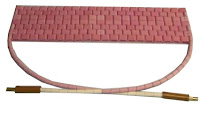 |
| Work with the manufacturer's experts for better outcomes |
Manufacturers provide services that may help you save time and cost, while also achieving a better outcome for the entire project. Consider a few elements the technical sale rep brings to your project:
- Product Knowledge: Product managers and sales support personnel will be current on product offerings, proper application, and capabilities. They also have information regarding what products may be obsolete in the near future. This is an information source at a level not generally accessible to the public via the Internet.
- Experience: As a project engineer, you may be treading on fresh ground regarding some aspects of your current assignment. There can be real benefit in connecting to a source with past exposure to your current issue.
- Access: Through the manufacturer's internal applications people, you may be able to establish a connection to “behind the scenes” information not publicly available. The people at the manufacturer can provide answers to your application questions.
Develop a professional, mutually beneficial relationship with the manufacturer's technical sales team, and don't be shy to develop a professional and trusting relationship. Their success is tied to your success and they are eager to help you.

